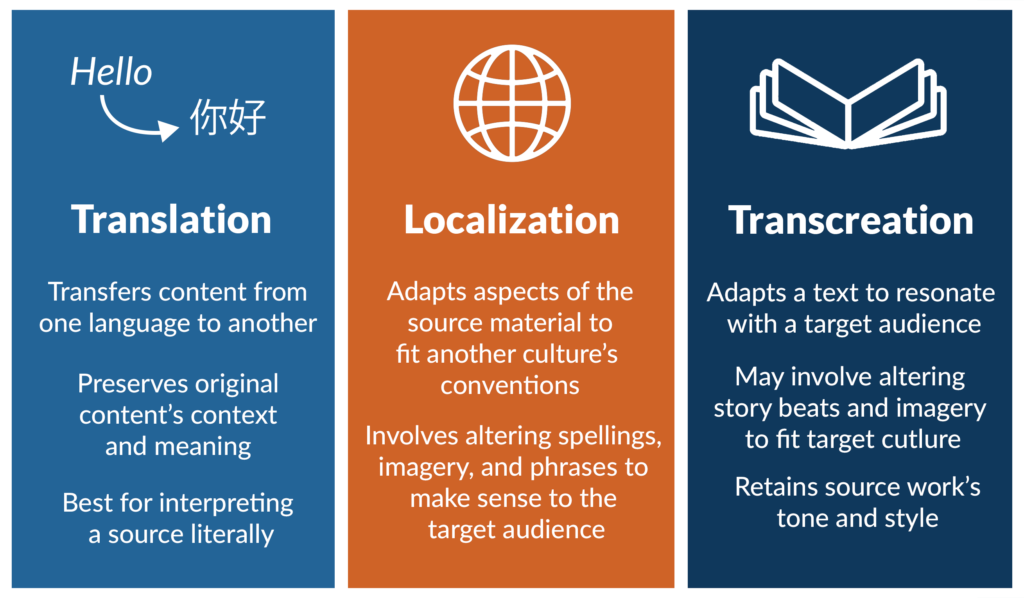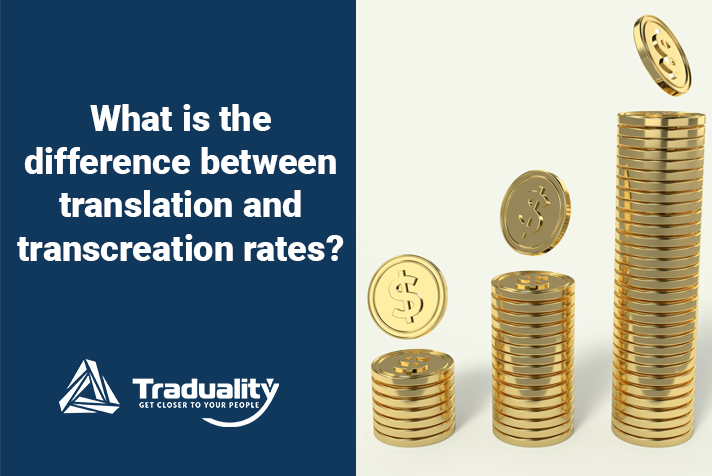Two terms often come up in the language services industry: translation and transcreation. While they may seem similar, they serve different purposes and, consequently, come with different price tags. But what is transcreation, and how does it differ from translation? And more importantly, how do these differences impact their respective rates?
What is the Meaning of Transcreation?
Transcreation is a blend of two words: translation and creation. It goes beyond the literal translation of words and phrases. Instead, it involves adapting the message from the source language to the target language in a way that resonates with the local audience. This process requires a deep understanding of both languages and cultures and a creative flair to maintain the original message’s tone, intent, and emotional impact.
But what is an example of transcreation? You would be surprised to know that you can find examples in your daily life. An example of transcreation could be a marketing campaign that’s being launched globally. The campaign’s slogan, which may be a play on words or a cultural reference in the original language, might not make sense when directly translated into another language. A transcreator would recreate the slogan in the target language, ensuring it carries the same impact and appeals to the local audience.
It’s important to know the purpose of transcreation, which is to bridge the gap between languages and cultures. It allows businesses to communicate effectively with their international audience, ensuring their message is not only understood but also resonates with the target market. This is particularly crucial in today’s globalized world, where businesses often need to reach audiences in different countries and cultures.
Transcreation vs. Translation: The Similarities and Differences
While translation and transcreation involve converting a message from one language to another, we need to understand their similarities and differences. Both services require a deep understanding of the source and target languages and cultures. They both aim to convey a message from one language to another, ensuring the target audience can understand and relate to the content.

However, the differences lie in the approach and the level of creativity involved. Translation focuses on accurately converting the text from the source language to the target language, maintaining fidelity to the original text. Transcreation, on the other hand, involves a higher degree of creativity. It’s not just about conveying the same meaning but also the same tone, intent, and emotional impact. This often involves reimagining the text, which requires a deep understanding of the source and target cultures.
These differences extend to the skills required for each service. Translators need to be linguistically adept and have a good understanding of the cultures associated with both languages. Transcreators also need to be creative and marketing-savvy, as they often work with marketing and advertising content. This added layer of creativity and cultural understanding sets transcreation apart from translation. To learn more about how transcreation plays into marketing translation, check out our Ultimate Guide to Marketing Translation.
What are Current Translation Rates?
People unfamiliar with the translation industry often wonder: What are current translation rates? To answer this shortly, translation rates can vary widely depending on several factors, including the complexity of the text, the language pair, and the translator’s experience and expertise. However, they are typically charged per word. Currently, the average translation rates per word range from $0.05 to $0.15 for most language pairs.
But these rates are not set in stone. For highly specialized texts, such as legal or medical documents, the rates can be higher due to the expertise required. Similarly, less common language pairs may command higher rates due to supply and demand. It’s also worth noting that these rates often include only the translation, not proofreading and quality assurance. Therefore, when considering translation rates, it’s important to consider the full scope of services included.
What are the Most Common Transcreation Rates?
Transcreation rates, on the other hand, are typically higher than translation rates. This is because transcreation involves a higher degree of creativity and cultural adaptation. It’s not just about converting text but recreating the message in a way that resonates with the target audience. As such, transcreation rates per word are generally higher, and transcreators often charge in hours, as charging per word would not reflect their effort in transcreating. Transcreation rates per hour often range from $35 to $75.
However, just like translation, transcreation rates can vary. Factors such as the project’s complexity, the creative effort required, and the turnaround time can all influence the final cost. It’s also important to remember that transcreation is a more involved process that may include brainstorming sessions, market research, and multiple rounds of revisions to ensure the final product hits the mark. This additional effort and expertise are reflected in the higher rates for transcreation.
In conclusion, while both translation and transcreation play crucial roles in international communication, they serve different purposes and require different skill sets. This is reflected in their respective rates, with transcreation generally commanding a higher price due to its creative nature and the added value it provides.
Switch Between Translation and Transcreation in Any Language
If you’re looking to work with both translators and transcreators, Traduality is your best choice for a translation marketplace. Traduality has everything you need to succeed; create your first project today and find vetted translators, or book a meeting with us to learn more about your specific needs.
Updated 2/21/2024.





0 Comments